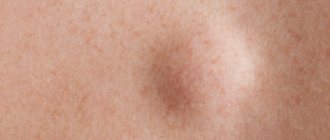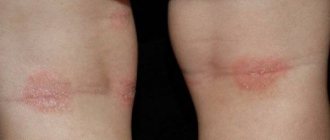Movement disorder syndrome is one of the childhood diseases that has recently become more common in newborns. For many parents, this diagnosis causes despair, since until recently the disease was little studied, which means its treatment was almost impossible.
The syndrome becomes known already in the first weeks of a child’s life. And if doctors begin to suspect its presence not in the maternity hospital, then parents definitely see some deviations in the development of their baby. And the sooner this happens, the greater the likelihood that further development of the disease can be avoided, and in addition, the symptoms already appearing can be quickly eliminated.
This is why it is so important to monitor your baby and promptly tell the doctor about any abnormalities. But to do this, you need to know exactly how movement disorder syndrome (MDS) manifests itself in newborns, and what signs may indicate the presence of this disease.
Difficulties in identifying infant problems
Nervous tissue has not yet completed its development by the time of birth, and the process of its maturation and formation continues. Lesions are usually severe and difficult to detect. If damage to the nervous system and brain tissue occurs during pregnancy or childbirth, it is usually generalized (extensive) damage, and it is extremely difficult to determine the initial localization of the damage, the most affected area (for example, where there is a hematoma, cyst, area of ischemia). Sometimes neurologists can only talk about a predominant lesion in one or another part of the brain - brainstem, cerebellum, temporal, frontal lobe.
Motor acts involve the pyramidal and extrapyramidal systems (these are special areas where the arcs of motor reflexes pass). At an early age, even experienced doctors sometimes find it difficult to distinguish pyramidal injuries from others, and this is important for further tactics and prognosis. The main criteria and characteristics used in diagnosing problems with the nervous system and motor sphere of children are:
- Muscle tone
- Reflex acts.
Important:
Only a doctor familiar with the age-related physiology of children can correctly assess muscle tone, since in the first year the changes in tone are quite significant, as well as in the baby’s reflexes.
It is especially important to correctly assess muscle tone in children at birth and then, in periods up to three months and from three to six months - they have a feature - physiological muscle hypertension, which occurs during certain periods. Disorders of motor functions in MDS (movement disorder syndrome) can manifest themselves in the form of:
- Dystonia of muscular areas of the body
- Hypertension of muscle elements (local or diffuse)
- Muscle hypotension (also local or widespread).
note
A change in muscle tone is not a disease, it is just a pathological syndrome caused by certain changes in the nervous system (the result of injury, ischemia, or other damage).
Muscle hypotonia: causes of development, manifestations
With muscle hypotonia syndrome in children, there is a reduced resistance to passive movements, and an increase in volume is also typical if the doctor or parents move the arms and legs. That is, bending the baby’s arms and legs does not meet resistance; in difficult situations, children can look like “rag dolls.” With severe hypotonia of muscle elements, voluntary motor activity can be significantly limited or spontaneous (chaotic movements of newborn children) suffers, which is caused by reflexes, associated with normal tendon reflexes, or pathological (abnormal increase or decrease). Sometimes some reflexes may even be absent (drop out), it all depends on the specific nature of the damage to the nervous system.
Neurologists especially often detect muscle hypotonia syndrome in children during the neonatal period and in infancy; it can develop from birth or develop and become increasingly severe as the baby grows.
Congenital muscle hypotonia is typical for:
- Severe hypoxia suffered in utero or during childbirth, asphyxia of the child
- Congenital forms of neuromuscular diseases
- Trauma to the head or spinal region during childbirth, involving the brain or spinal cord
- Lesions during childbirth of peripheral nerves (areas of the elbow or shoulder, femoral, facial)
- Hereditary metabolic disorders leading to changes in the nutrition of nervous tissue
- Chromosomal syndromes, genetic abnormalities
- In the presence of pathologies with congenital dementia or situations where it is acquired at an early age.
It is also worth knowing that muscle hypotonia can manifest itself for the first time or become more serious and severe at any stage of growing up, sometimes its manifestation occurs several months after birth and its course steadily progresses to severe conditions. In this case, we are talking about pronounced and quite common hypotension, which affects a large volume of muscles and leads to sharp deviations in the child’s health.
Important
Hypotension, which was expressed from early childhood, can gradually turn into normal muscle tone or dystonic states, muscle hypertension, or it remains one of the leading symptoms of SDN in children throughout the first year of life.
The degree of severity of such abnormal muscle hypotonia among children can vary from a slight and insignificant decrease (reduced resistance to passive actions and movements is weakly felt) up to a complete shutdown of active movements and almost complete atony or immobility.
General information
Muscle tone disorders in newborns are a syndrome that accompanies many diseases, including congenital and hereditary ones. Movement disorders that appear from the moment of birth can persist throughout later life and cause mental and physical development delays, which, in turn, contributes to the growth of childhood disability.
That is why timely diagnosis of muscle tone disorders in newborns and treatment of the underlying nosology is so important. At the same time, the prevention of such disorders plays an even more significant role, since the correct intrauterine development of the fetus largely depends on the characteristics of the mother’s body and her living conditions.
Why is hypotension dangerous and what is its effect on infant development?
Naturally, impaired muscle fiber tone can significantly affect the child’s health and disrupt its full development, especially when it comes to hypotension.
note
If a decrease in muscle tone is detected in a mild form and is not combined with any other neurological pathologies, such a condition either does not in any way affect the growth and physiological development of the baby, or leads to inhibition and delay in the timing of the child’s psychomotor development, usually starting from the second half of the year, at this time motor acts and the most important skills should be especially actively formed.
Moreover, it is typical that the developmental lag occurs unevenly; quite complex motor acts and functions can be inhibited, which may require simultaneous and coordinated interaction of various muscle groups for their implementation. An example is the fact that a child of about nine months with the presence of muscle hypotonia, if he is seated by a doctor or parents, can sit, but he cannot sit down independently, coordinating his body.
There are options for muscle hypotension:
- localized in the area of one limb, occurring as a traumatic effect (paresis of an arm or leg). In such cases, the delay in skill development will be limited to the affected area and its effect on the rest of the child's body.
- widespread, with a clearly defined presence of severe muscle hypotonia. This fact can have a severe and significant impact on the motor development of children. For example, the development of motor acts in a pathology such as spinal amyotrophy (also known as Hoffmann-Werdnig syndrome) in a ten-month-old child corresponds to the level of a three-month-old child.
Delays in the development of motor functions, naturally, can also become the cause of peculiarities in the formation and development of the child’s mental functions. It is important to understand that when there is no possibility of voluntarily grasping objects with hands, this leads to inadequate formation of hand-eye coordination and various manipulations with objects and toys.
Often the formation of muscle hypotension is combined with various other neurological disorders in the form of cranial nerve paresis, the development of hydrocephalus or convulsive syndrome, all of this, in combination with aggravating circumstances, affects the delay of normal development and is determined not only by reduced muscle tone, but also by all other influences.
At the same time, it is worth noting that the localization and severity of reduced muscle tone, its effect on the inhibition of physical as well as mental development will largely depend on the disease that led to such phenomena. In the presence of convulsive syndrome, against the background of congenital dementia (or early acquired form), not only hypotension, but also a delay in mental development leads to pronounced delays in mastering the required movements.
Dystonic syndrome in children
The concept of SDN in babies in the first year after birth may also include such a condition as muscle dystonia - this is an alternation in muscle groups of the limbs (usually arms or legs, less often the body) of both decreased and increased muscle tone, or a change in the tone of muscle elements based on certain effects on the nervous system.
Thus, at rest in such children, in the presence of only passive motor acts, obvious muscle hypotonia, which is of a general nature, will be expressed. But when they try to perform certain movements, either against the background of positive or negative emotions, an increase in muscle tone begins, and the formation of pronounced pathological reflexes occurs, which are predominantly tonic in nature. This phenomenon is called dystonic attacks .
note
Especially often, a similar phenomenon of dystonic disorders is observed in those babies who suffered a hemolytic disease at birth, or were born while carrying an Rh-conflict or blood group-incompatible pregnancy.
With a pronounced syndrome of muscle dystonia, difficulty arises with the development of full-fledged straightening reflexes in the torso area in the toddler, plus the development of balance reactions suffers. This is due to constantly changing muscle tone. When this is a syndrome of mild and transient muscle dystonia, it will not have a pronounced negative impact on the growth and development of the baby as he ages. Gradually, as the brain centers mature, everything levels out.
Normal tone of children up to one year monthly
Vegetative-vascular dystonia in infants is a common disease. It is detected in 45% of newborn babies. The pathology is manifested by disturbances in the normal regulation by the child’s nervous autonomic system of the work of his internal organs. Due to dysfunction, the baby’s body sometimes reacts inadequately to external irritants. If the activity of the child’s nervous system is normalized in time, his organs will restore their normal functioning.
Like any disease, muscular dystonia has its causes.
- genetic predisposition;
- difficult pregnancy, childbirth;
- frequent stress, constant psychological tension;
- lack of sleep, excessive physical activity, improper (irregular) nutrition;
- congenital damage to the central nervous system;
- the presence of diseases of internal organs of a chronic or acute nature, including mental disorders.
Vegetative-vascular dystonia in infants is provoked by congenital:
- heart disease, arrhythmia;
- cardiac diseases caused by infectious, inflammatory processes;
- Graves' disease;
- Cushing's syndrome.
VSD in infants manifests itself both as an independent disease and as one of the symptoms of somatic or nervous disorders. In children under one year of age, vegetative-vascular dystonia often manifests itself against the background of changes in blood vessels, heart muscle, and organs of the respiratory or digestive system.
The disease can also develop due to standard damage to the child’s brain during childbirth or during intrauterine development.
Symptoms of the disease
The mother must monitor the baby's behavior. After all, in a newborn, vegetative-vascular dystonia is manifested by many alarming disorders, which at first glance have nothing to do with the disease:
- frequent regurgitation;
- bloating;
- constipation or diarrhea, irregular bowel movements;
- the child refuses to eat, does not gain weight well;
- possible skin manifestations of pathology (allergic dermatitis, diaper rash, erythema);
- restless sleep, frequent night hysterics;
- The baby cries and is capricious for no reason.
Muscle dystonia in infants is also often observed (changes in muscle tone, increased sensitivity to light or sounds). Over time, incorrect placement of the feet appears, difficulties with expressing emotions - increased susceptibility, fearfulness, anxiety. In toddlers (2–3 years), VSD manifests itself with similar symptoms.
For a visual assessment, you need to carefully examine the baby, evaluate his posture during sleep and activity.
Treatment
Dystonia in children is treated primarily in a non-drug manner. From the moment the diagnosis is made, the baby is under the control of several specialists - a pediatrician and a neurologist. Sometimes, based on the symptoms of the pathology, the child can additionally be observed by specialists of a narrow profile: psychiatrist, cardiologist, endocrinologist.
Of the treatment methods recommended for infants, the most popular are:
- Relaxing and therapeutic massage. If dystonia in children is manifested by muscle hypertonicity, then massage movements should be leisurely, pressing firmly on the affected areas, but without causing pain. Pressing improves reflexes and blood circulation of tissues, as well as processes disrupted due to lack of physical activity. Children with hypotension are given a tonic massage of the body, actively working out the limbs and affected areas.
- Gymnastics. Neurologists recommend that children do physical exercise from the moment of birth. This is useful for the development of the musculoskeletal system. Gymnastics for infants with VSD is selected depending on the type of disease. If the baby has weak muscles, gymnastics is done carefully, choosing passive exercises (the child does not move). For hypertonicity, muscle stretching exercises are performed with an ever-increasing range of motion.
- Vitamin therapy is often used, based on periodic intake of B vitamins, minerals and amino acids.
Many parents and specialists believe that massage is most effective for this diagnosis. - Sometimes doctors recommend using herbal medicine (treatment with infusions of medicinal plants). Most often, decoctions of ginseng root, licorice, and lemongrass are prescribed. These herbs have a general strengthening effect on the body. A decoction of Eleutherococcus, which has a cardiotonic effect, is given to infants to drink with extreme caution.
- Drug therapy for VSD in infants is an extreme measure used to treat severe forms of the disease. Most often, nootropic drugs are prescribed that stabilize tissue microcirculation. Taking medications that stabilize the functioning of the nervous system is also indicated. The medications, dosage regimen and duration of treatment are prescribed by the attending physician.
Treatment of vegetative-vascular dystonia in infants is a set of measures aimed at reducing the symptoms of the disease. Regular visits to the pool by patients showed good results.
Muscular hypertension in children
The syndrome of hypertension of individual elements or entire muscle groups will be characterized by the opposite phenomena than with hypotension. This is an increased resistance to passive movements, in addition, due to this, a limitation of the voluntary or spontaneous motor activity of infants . Also typical is an increase in tendon reflexes with an expansion of the zone of occurrence, pathological settings of the arms and feet (twisted, pinched). Typically, increased muscle tone can predominate in the area of flexor muscle groups, as well as those holding the posture; the muscles in the hips and shoulders can be significantly changed, which is expressed in the child adopting a certain typical posture. But a diagnosis is not made based solely on posture and muscle hypertension is not immediately determined - these are additional and relative criteria for pathologies.
note
Additional criteria will be changes in congenital reflexes and special symptoms of Gordon, Babinski or Oppenheim reflex. Under normal conditions, they are mild, have an inconsistent occurrence and, as the child develops, weaken and fade away. Against the background of increased muscle tone, they are constantly observed, and have no dynamics of extinction.
In terms of severity, muscle hypertonia syndrome can have variations from a slight increase and increased resistance for passive movements of the baby to complete immobility and stiffness (this is called decerebrate rigidity - the complete impossibility of voluntary and other movements, the muscles are so toned).
In such serious cases, even the use of medications that have the properties of muscle relaxants (relax the muscles) cannot lead to muscle relaxation, and it is even more impossible to carry out passive movements with the hands of parents or a doctor.
If the hypertension syndrome has a mild manifestation, is not combined with the presence of pathological (also known as tonic) reflexes, or is not complicated by other neurological disorders, it will not significantly affect development . This usually manifests itself in inhibition of the development of motor abilities in children in the first months (up to one year old) - they later roll over, then begin to crawl, etc. Based on the location, in which muscle groups the tone is greater, the development of certain skills and motor acts will be inhibited.
For example, if there is excess muscle tone in the arm area, there may be a delay in the development of directional movements of the arms toward objects, difficulty grasping toys, or manipulating objects. Grasping skills in the hands may be particularly affected. In parallel with the fact that babies later begin to grab things and toys for manipulation, they retain a specific (ulnar) grip for a long time - they take objects with the whole hand. But tweezer grips with fingers can develop slowly, in some cases requiring special training and additional stimulation. The development of the formation of protective functions of the hand may be inhibited; in these situations, the reactions of maintaining balance while lying on the stomach, when learning to sit and stand, as well as when walking will be inhibited accordingly.
If the muscle tone of the legs suffers, support reactions on the part of the legs and the skills of sitting down independently may be inhibited, then such children with difficulty and reluctance stand on their legs, preferring crawling, and stand on their tiptoes with support from a support.
We recommend reading: What is dangerous and how to recognize muscle hypertonicity in infants
Cerebellar disorders: role in movement disorders of children
The human cerebellum is an important brain center; it is responsible for coordination of movements and statics, as well as the smoothness and combination of motor acts, and maintaining posture. Cerebellar lesions in children from early childhood can be the result of intrauterine underdevelopment (cerebellar agenesis - underdevelopment, hypoplasia - decrease in volume), and it can also be affected as a result of birth trauma or acute asphyxia during childbirth. Sometimes a special option may be hereditary problems in its development or early degeneration, tissue death soon after birth.
Such problems lead to decreased muscle tone, problems with coordination of movements in the arms, as well as balance disorders, when children gradually master age-appropriate skills - they learn to sit and stand, then walk. In addition, cerebellar syndromes are typically characterized by the appearance of trembling in the arms and legs, problems with coordination and instability of gait; these can be identified after children have mastered voluntary and active movements.
Important
Parents may first begin to suspect problems in coordination if they observe their children and how they reach for toys, can grab them with their hands and pull them to their mouths, and also how they stand or sit, and then walk.
Infants who have problems with the cerebellum and coordination may make a lot of unnecessary movements when trying to grasp and hold toys, this is especially pronounced when babies are in a sitting position . They develop independent sitting with a pronounced delay, about 10-12 months; often during this period, children have difficulty maintaining balance and immediately fall when they need to turn to the sides or when they need to take objects. The child is afraid of falling, and therefore he does not play with objects with two hands, only with one, holding himself and maintaining support using the second hand. Children begin to walk closer to two years of age, but they often fall, and some of the babies, because of this, prefer crawling at a time when it is high time for them to walk normally.
In some cases, against the background of cerebellar disorders, floating eye movements and speech disorders , the first symptoms of dysarthria of cerebellar origin, may be observed in the first year of life. If the lesion is combined with damage to the cranial nerves, there may be specific delays in development - late fixation of the gaze on objects, tracking them, then problems with motor-visual coordination and impaired orientation in space; as they grow, significant problems with the development of speech arise and especially active.
Movement disorder syndrome in infants: ICD 10 code, Komarovsky’s opinion on treatment
Psychotherapist of the highest category Oleg Viktorovich
35081
Update date: June 2020
Movement disorder syndrome is one of the disorders of the human motor system in which brain damage occurs, causing a malfunction of the central nervous system. The disease can affect one or more parts of the brain, leading to various consequences. Typical manifestations of the disease include deterioration of muscle tone and problems with movement.
What is movement disorder syndrome?
Speech development slows down in children suffering from movement disorder syndrome
Most often, the disease develops against the background of brain injury or hypoxia suffered by the infant. Children aged 2-4 months are at risk.
A unique impetus for the development of the syndrome is the negative factors affecting the fetus during its intrauterine development.
If a child has muscle hypotonia or convulsive muscle activity, immediate treatment is necessary.
The clinical manifestation of movement disorder syndrome in infants occurs very early, starting from the first days of the baby’s life. Most often, the development of the disease is indicated by hyper- or hypotonicity of the muscles, a disorder of spontaneous motor activity, while reflex activity is suppressed against the background of deteriorated mobility of the limbs.
A child suffering from movement disorder syndrome lags behind his peers in development, unable to cope with the coordination of movements. Such children develop problems with vision and hearing, and sometimes with speech. Muscle tissue develops unevenly on different limbs.
Such a situation can result in mental development disorders and intellectual problems. As a rule, in children suffering from motor impairment syndrome, psychoemotional and speech development slows down. They begin to crawl and sit later than their peers. Some babies are unable to hold their head up on their own at one year of age.
Due to impaired development of the laryngeal muscles, problems arise with the swallowing reflex. This sign indicates the development of a serious stage of SDN, in which it is necessary to immediately carry out therapeutic measures that can eliminate dangerous symptoms.
Important! This syndrome is not prone to active progression. Therefore, timely and competent treatment can significantly improve the patient’s quality of life.
ICD-10 movement disorder syndrome code: G25.
Causes
Smoking during pregnancy can cause the child to develop movement disorder syndrome
In modern medicine, there are a number of factors that provoke the development of this syndrome:
- A birth injury that was sustained by a child as a result of the obstetrician using excessive physical force in an attempt to speed up the delivery.
- Long and difficult labor, during which there was a delay in the expulsion of the fetus.
- The development of hypoxia, as a result of which the brain cells responsible for the course of various muscle processes are affected.
- Neuroinfections of the intrauterine type that penetrate the placenta from an infected mother to the fetus.
- The presence of hidden infections in the mother, such as toxoplasmosis and rubella.
- Congenital anomalies of joints and bones.
- The mother has sexually transmitted diseases.
- Various disorders operating at the chromosomal level.
- Smoking, alcoholism and drug addiction during pregnancy.
- Development of fetoplacental insufficiency.
- The umbilical cord is entwined around the body and neck of the fetus.
- Hydrocephalus, which developed due to the outflow of cerebrospinal fluid in the brain.
In most cases, the development of the syndrome is caused by the simultaneous impact of several negative factors on the child’s body. Usually only one of them acts as the leader, while the others help enhance the effect.
Symptoms
Visual and auditory reactions are somewhat delayed in children with motor impairment syndrome
The occurrence of changes in the brain structure can cause a number of movement disorders. Most often they develop due to problems with the transmission of nerve impulses from the brain to the muscles. With SDN, pathological changes in muscle structure are possible.
As the disease develops, the infant may have the following types of motor dysfunction:
- the presence of paresis and paralysis;
- muscle strength is significantly reduced;
- due to severe hypotension, the limbs may become thinner, and dystrophic processes develop in the muscles;
- the baby’s basic reflexes, such as swallowing and sucking, are impaired;
- the muscles become so overstrained that numerous spasms and convulsions develop, which can be protracted;
- tendon reflexes may be weakened or strengthened;
- problems with articulation;
- the child’s inability to independently bend and lift his limbs and hold his head;
- involuntary movements;
- visual and auditory reactions are somewhat delayed;
- lack of smiles due to poor facial expressions;
- slow movements, weakened muscles;
- cyanosis of the skin, development of convulsive syndrome;
- difficulties during breastfeeding.
Infants with movement disorder syndrome may stare at one point for a long time and sit for a long time, periodically shuddering convulsively. They need help turning their head. As a rule, one arm of the patient is pressed tightly to the body, the other can move and grasp various objects.
The relaxation of the body is replaced by its tension. It is possible to develop visual dysfunction, in which the baby is not able to reach the thing he needs on the first try.
Against the background of this syndrome, the baby may have both hypertonicity and hypotonicity of the muscles. In the first case, the symptoms will be as follows:
- the baby arches his body;
- the head is always turned in one direction;
- the baby cannot stand on his entire foot and always stands on his toes;
- the child clenches his hands into fists and presses them to his body;
- The baby begins to pick up toys and hold his head quite early.
Muscle hypotonia suggests the development of the following symptoms:
- the child screams faintly;
- unable to crawl, sit or stand up independently;
- practically does not move his limbs;
- often throws his head back, but is unable to hold it in this position for a long time;
- when sitting, he is unable to maintain balance - he constantly sways from side to side;
- the general weakness of the child and sluggishness of his movements are noticeable.
Classification
At a late stage of the syndrome, the child may have more frequent seizures
Modern medicine distinguishes several forms of this pathology:
- The disease primarily affects the legs. In this case, the baby is capable of active movements with his arms, but gets to his feet late.
- The lesion of the trunk is unilateral. At the same time, the infant has impaired swallowing function, he is noticeably lagging behind in mental development and has problems with speech.
- The disease affects the legs. As a result, the child is unable to stand, crawl or walk. There is a severe disorder of motor function.
- The child is absolutely incapable of independent movement. At the same time, he is mentally unstable and prone to developing mental retardation.
Important! When a child is diagnosed with movement disorder syndrome, he needs professional treatment. His body cannot cope with this pathology on its own.
In some cases, neurologists make an erroneous diagnosis due to the subtlety of symptoms in the early stages of the disease. Subsequently, the diagnosis can be removed, and the child will be declared healthy.
SDN may involve the following stages:
- Early. The disease manifests itself mildly, but already at this stage the baby’s muscle tone is impaired. Most babies lose the ability to turn their head independently by 4 months. Severe seizures may develop.
- Second stage. Signs of the disease worsen, becoming more obvious. Ten-month-old children are not able to hold their head up on their own, but they make attempts to turn, sit down and even walk, maintaining an unnatural posture. During this period of life, a child develops unevenly.
- Late stage. Develops after three years of age. The consequences in this case are irreversible. The child develops problems in the structure of the skeleton, expressed in multiple deformities, joint contractures form, hearing and vision deteriorate significantly. The child has difficulty swallowing, speaks very poorly and is mentally unstable. Convulsions become more frequent and last longer.
As complications of movement disorder syndrome in children, internal organs are involved in the pathological process.
As a result of such changes, the child has problems with defecation and urination, and coordination of movements is significantly impaired. Severe epileptic seizures often occur.
The child has difficulty eating and breathing. Learning is difficult due to problems with concentration and memory disorders.
Diagnostics
A comprehensive examination includes the following diagnostic techniques:
- Perinatal history. Using this technique, specialists can detect the presence of severe brain intoxication, oxygen starvation, as well as infection of the fetus in the womb.
- Ultrasound with Doppler. Allows you to obtain accurate information regarding cerebral blood flow.
- Apgar score. Allows you to assess the baby's vitality.
- MRI and CT. One of the most informative techniques through which specialists are able to identify lesions.
- Neurosonography. A procedure that involves scanning the brain using ultrasound.
Treatment
Relaxation massage is one of the most effective methods of therapy (massage should only be performed by a qualified specialist)
Therapy for this syndrome is prescribed by a neurologist. Modern medicine has a number of techniques that help quickly eliminate the disease. It should be remembered that the earlier the syndrome is identified, the easier it will be to fight it.
Treatment of SDN according to Dr. Komarovsky involves the following methods:
- Massage. Properly carried out procedures provide truly high results.
- Homeopathy can be used to activate brain processes.
- Physical therapy can be used to improve coordination of movements. It also allows you to restore the patient’s motor functions.
- Physiotherapy. In this case, various techniques may be used, determined by the doctor. The most popular of them are: magnetic therapy, hydromassage, electrophoresis.
- High treatment results are ensured by mud therapy, as well as communication between patients and animals - dolphins and horses.
- Pedagogical correction. At the moment, several effective speech therapy techniques have been developed.
Source: https://mozg.expert/sindromy/sindrom-dvigatelnyh-narusheniy/
Formation of cerebral palsy as an extreme variant of the disorder
The most severe and extreme form of movement disorder syndrome in children for the first few months will be the development of cerebral palsy (the phenomenon of cerebral palsy). The set of clinical manifestations (symptoms) of cerebral palsy will depend on the presence of muscle tone disorders and their severity, but increased tone is typical for all forms of pathology, the severity of the disorders varies. Thus, some children are born with already high muscle tone, which progresses as they grow older, while others initially have it reduced or have severe dystonia, which then turns into hypertonicity. At birth, this category of children looks lethargic and lacks spontaneous activity; their unconditioned reflexes are depressed; by the second month of life, if the child is placed on his stomach or held vertically so that he makes attempts to hold his head, signs of dystonia appear. The baby may worry at times, muscle tone increases sharply, the arms unbend and curl inward in the area of the shoulders and forearms, hands, and the fingers clench into fists. In this case, the legs unbend and cross, and are brought inward. Such attacks last for several seconds, repeating throughout the day, and can be provoked by various external stimuli - screams, loud sounds.
The occurrence of movement disorders during the formation of cerebral palsy will be due to the fact that damage to brain structures that are still extremely immature can disrupt the correct sequence in brain maturation. Due to this, the higher cortical centers, which are responsible for the coordination and coherence of all movements and the formation of skills, cannot refuse an inhibitory influence on primitive innate brainstem reflexes. Therefore, the disappearance of unconditioned reflex activity is inhibited, pathological reflexes are not blocked, muscle tone changes, which becomes an obstacle to the formation of straightening of the body and the formation of its balance, development is inhibited and disrupted, the body does not obey the correct impulses of the brain, which is seriously damaged.
Diagnostics
The diagnosis and treatment of the syndrome is carried out by specialists in the field of neurology and pediatrics, who make their diagnosis based on data obtained from the history of pregnancy and childbirth of the mother. The results of laboratory tests, ultrasound, tomography and encephalography are of great importance.
- Perinatal history - intrauterine infection, severe intoxication of the body, oxygen starvation of the brain.
- Assessment of a newborn using the Apgar scale allows you to characterize the vitality of the baby at birth.
- Neurosonography is an examination of a newborn that involves scanning the brain with ultrasound.
- Ultrasound with Doppler - study of cerebral blood flow through the fontanel.
- Electroencephalography is a method for studying the electrical activity of the brain removed from the surface of the scalp, recording such potentials.
- Electroneuromyography is performed to assess muscle tone.
- A CT or MRI scan of the brain can detect lesions.
- Examination by an ophthalmologist, ENT specialist, psychiatrist, orthopedic traumatologist.
Treatment methods for babies
In many ways, the difficulty of treatment is determined by the fact how early the problems are identified and how complex and severe they are, whether there are organic brain lesions of an irreversible nature. Today, neurologists have many effective techniques that can eliminate movement disorders in the early period and quite quickly and effectively. After full-fledged medical and additional treatment, functional disorders disappear without a trace, and with organic disorders in unadvanced stages, the situation can be significantly improved. Naturally, all recommendations are individual, but in general principles, treatment consists of:
- Courses of therapeutic general massage performed only by a specialist experienced in regulating muscle tone in infants
- A course of physical therapy and a special motor regimen, constant classes with the child
- The use of physiotherapy with various types of influences
- The use of groups of drugs that improve the transmission of nerve impulses and their perception by muscle fibers
- Drugs that normalize muscle responses to incoming impulses from the nervous system
- Vitamin preparations of the neurotrophic series (group B)
- Rehabilitation activities, classes at home with parents using special techniques.
In the presence of mild variants of SDN in children, everything can be quickly corrected, but serious organic pathologies cannot be completely corrected and will then require constant monitoring and rehabilitation courses throughout life.
Alena Paretskaya, pediatrician, medical columnist
44, total, today
( 47 votes, average: 4.49 out of 5)
Chest pain: possible causes, which doctor to contact
How to strengthen the nervous system and psyche?
Related Posts
Prevention and prognosis
Preventive measures to avoid the development of the syndrome:
- protection of motherhood and childhood;
- eliminating bad habits in pregnant women;
- the child’s interest in learning about the world around him with the help of colorful pictures and bright toys;
- barefoot walking, exercise therapy, therapeutic massage, fitball exercises,
- frequent finger play, walking on textured surfaces.
SDD is a treatable disease that needs to be fought. A mild form of the pathology responds well to adequate therapy. More severe cases require a special approach. If parents do not notice dangerous symptoms and do not consult a doctor in time, the child will have difficulty walking and learning. Advanced forms are complicated by mental retardation and epilepsy. Any delay in treatment can turn a mild case into a complex process.










